Palm Tree Problems & Nutrient Deficiencies
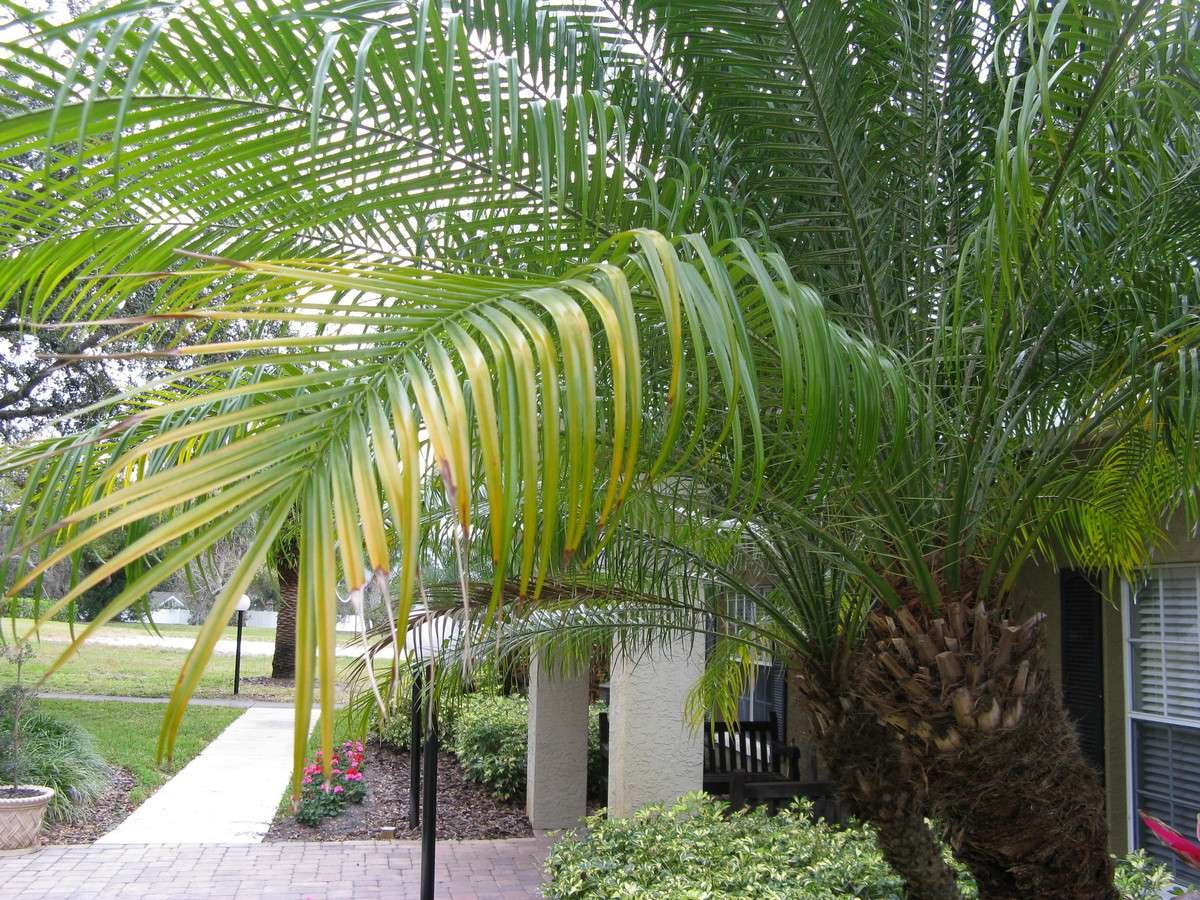
Florida palm trees need proper care to stay healthy and grow normally. Palm tree problems such as nutrient deficiencies are common from a lack of palm fertilizer. Palm trees in Florida need 16 elements to grow in good condition.
Plant problems can occur from Florida’s nutrient-poor soils. When palm tree problems happen they can be identified from visual inspection.
Knowing what to look for is the key to diagnosing nutrient problems.
Common Nutrient Deficiencies That Cause Palm Tree Problems
Palm Fertilizer Nitrogen (N)
When Florida’s palms become nitrogen deficient the leaves will turn uniformly light- green or yellow in color. Symptoms will appear on the older leaves first, then the entire tree will be off color.
To correct the problem apply a granular palm fertilizer containing the essential element nitrogen. Foliar applications can be done with liquid fertilizer. Spray thoroughly two times 14 days apart. Do not spray more than twice within 6 weeks. After fertilizing palm trees should respond quickly.
Potassium Palm Tree Problems (K)
The most common disorder and most serious cause of a dying tree is the extreme lack of potassium. Symptoms showing deficiency in palm trees will be first seen on the oldest leaves. After it progresses the newer leaves will be affected next as it becomes more serious.
Symptoms will begin as yellow or orange spots on the leaves.
Eventually, leaves will become withered in appearance. Phoenix Date palms show symptoms in the older leaves by turning an orange-brown discoloration near the tips. Potassium palm tree problems are most severe in Royal, Spindle, Date, Coconut, Areca, and Queen palms. Fertilize with granular palm tree fertilizer containing potassium sulfate. Applying liquid fertilizer by spraying is not effective.
Palm Tree Fertilizer Magnesium (Mg)
Palm tree problems such as this is common in Phoenix Date palms and Canary Island Date palms. It will first be seen on the oldest leaves and then continue up through the canopy. Look for a broad light yellow band along the outer margin of the oldest leaves. The center of the leaf should remain green.
Magnesium problems are rarely fatal to palm trees but do cause an unhealthy appearance. To correct this nutrient problem apply straight magnesium which can be found at garden centers in 5-10 pound bags. The amount to be applied depends on the size of the palm. So follow the directions on the label. Unfortunately leaves affected will not return to green, so new growth is needed to replace them.
Palm Trees Fertilizer Manganese (Mn)
Palm tree problems often called ” Frizzle Top ” on palms usually is caused by soil being alkaline, found especially in southern Florida. Symptoms showing a lack of manganese will occur on new leaves only. They will grow to look chlorotic, weak, and reduced in size with extensive streaking in the leaves.
As it continues to get worse new leaves will emerge looking withered, frizzled, or scorched and very small in size. Royal, Pygmy Date, and Queen palms are susceptible to manganese deficiency palm tree problems.
If left untreated a dying tree will not bounce back and survive. Treat as soon as possible with straight manganese sulfate. It can be found in 5-10 pound bags at garden centers. Follow the directions on the label.
Final Thoughts
If you are having difficulties in diagnosing a problem contact your local extension service. Perhaps you can visit them or take a close-up photo of an affected leaf and e-mail pictures to them.
A regular program of fertilizing palms can avoid palm tree problems from happening.

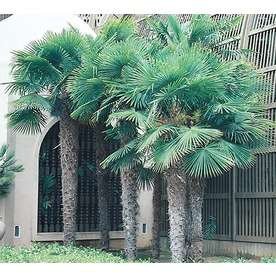
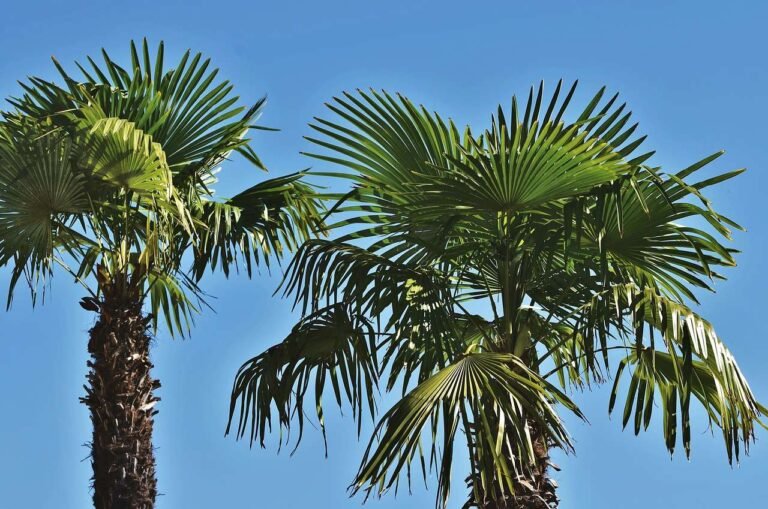
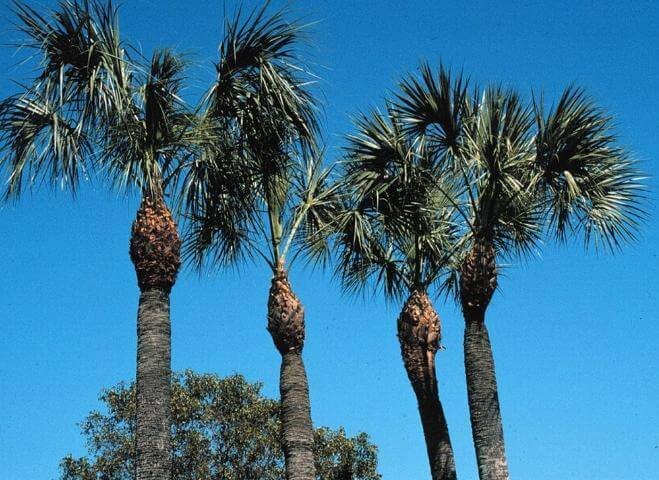

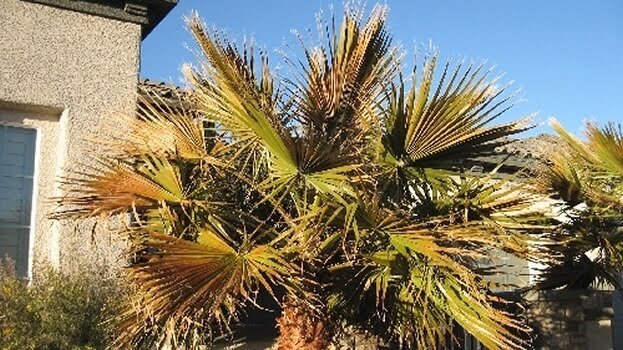

I have a Royal Triple Palm that the bark is deteriating.
Can this palm be saved with treatment. If yes, what type of treatment should we perform.
Thank you.
Janice,
Since I cannot visually inspect your palm, it is harder for me to determine exactly what is happening to your tree. Here is some information on palm trunk problems to help determine what possibly is occurring.
If the outer bark of the trunk appears to be shedding, separating in the form of dead tissue, crumbling or peeling off slowly, then this is natural for the tree to do this.
If the trunk itself is beginning to collapse and looks rotten at the point of collapse, then is has a disease from a fungus. If this problem is detected early, treatment with liquid fungicide can help save the tree.
If there are large holes along the trunk, this could possibly be borer damage. If the borers have penetrated deep inside the trunk it may be hard to stop them from killing the palm. If small holes are present this is probably from woodpeckers feeding.
If there is longitudinal splitting of the trunk, the palm could be dying.
If the trunk is shriveling, this could be from the tree being planted too deeply or severe drought problems.
You can contact your local county extension service and email them a picture of the tree and they will determine exactly what is occurring to your palm. Otherwise, I recommend having a certified arborist look at it if you feel it may be a severe problem.
Kurt